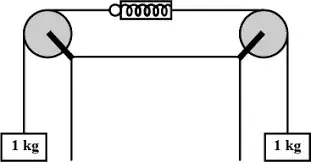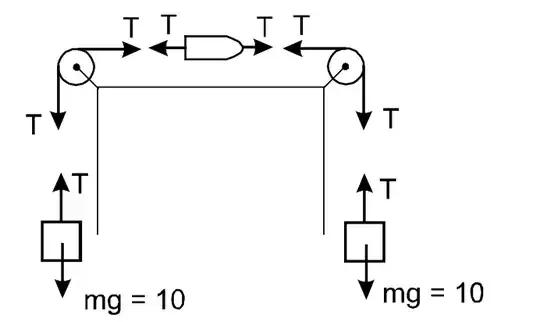I have a question related to how the reading of the balance is equal to the tension of the string.
In my opinion, the reading of the balance should be twice as much as the tension. This is the diagram I drew:
Here isn't it very obvious that there are $2$ forces acting on the spring and pulling it in opposite directions, each with a magnitude $10N$? Therefore in my opinion, the reading $= 20N$.
But of course, it isn't so, the reading is $=10N$. I want to know what is wrong in my reasoning.

